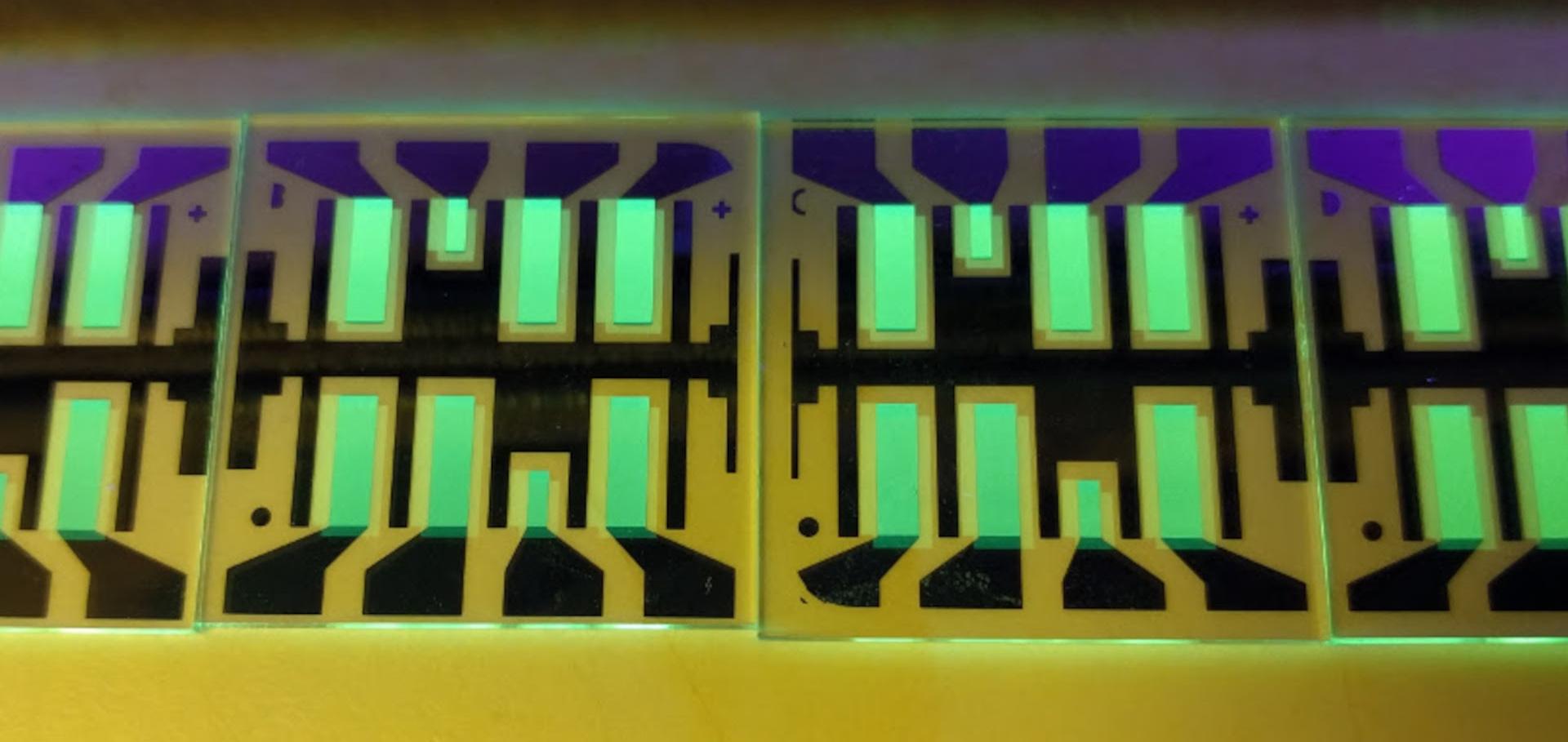Pentacene homojunctions: Electron and hole transport properties and related photovoltaic responses
Physical Review B - Condensed Matter and Materials Physics 77:19 (2008)
Abstract:
We report on organic p-i-n homojunctions composed of differently doped vacuum-deposited pentacene layers. We observe a remarkably high built-in voltage of 1.65 V. An analysis of the current-voltage characteristics under dark and illuminated conditions reveals that the open-circuit voltage is directly related to the built-in voltage and that the recombination process is influenced by the distinct charge transport properties of electrons and holes in the pentacene film. By a comparison with p-i-p and n-i-n single-carrier homojunctions, deep trap states located around 0.63 eV below the electron transport level are shown to influence the properties. © 2008 The American Physical Society.Comment on "Roles of donor and acceptor nanodomains in 6% efficient thermally annealed polymer photovoltaics" [Appl. Phys. Lett. 90, 163511 (2007)]
Applied Physics Letters 92:7 (2008)
Analyzing poly(3-hexyl-thiophene):1-(3-methoxy-carbonyl)propyl-1-phenyl- (6,6) C61 bulk-heterojunction solar cells by UV-visible spectroscopy and optical simulations
Journal of Applied Physics 102:5 (2007)
Abstract:
A nondestructive method for assessing the thickness of the photoactive layer in poly(3-hexyl-thiophene):1-(3-methoxy-carbonyl)propyl-1-phenyl- (6,6) C61 (P3HT:PCBM) solar cells is reported. In the approach the absorption spectrum of the solar cell as derived by optical simulations is fitted to the corresponding measured spectrum, varying only the P3HT:PCBM layer thickness. Within the 50-250 nm thickness range, a linear correlation between the position of a certain spectral minimum and the P3HT:PCBM layer thickness is shown, based on simulated absorption spectra. As an initial application, absorption spectra for 240 P3HT:PCBM solar cells prepared at four different spin-coating speeds were recorded, and the average P3HT:PCBM layer thickness estimated for each spin-coating speed. The simulated fraction of light absorbed in the P3HT:PCBM layer of the solar cells is compared with the P3HT:PCBM absorption spectra measured for films spin coated on simpler substrate types. The latter spectra cannot account for the light harvested in the photoactive layer of P3HT:PCBM solar cells because of substantial optical interference in the solar cells. The measured short circuit current densities Jsc for the solar cells vary with the spin-coating speed in a manner confirmed by optical simulations of the maximal short circuit current densities. The measured efficiencies follow the same pattern. On average the measured Jsc is 1-2 mA cm2 below the simulated maximal short circuit current densities. Based on the resemblance of the measured and simulated absorption spectra such difference can be attributed to recombination exclusively. © 2007 American Institute of Physics.Efficiency limiting factors of organic bulk heterojunction solar cells identified by electrical impedance spectroscopy
Solar Energy Materials and Solar Cells 91:5 (2007) 390-393
Abstract:
The current-voltage characteristic and the performance of organic bulk-heterojunction solar cells are very sensitive to small variations in the production steps or environmental influences. In our experiments, we found a large variation of the short-circuit current, which does not correspond to the device thickness as one might expect. The fill factor of some devices is below 25% under illumination, while the best devices have a fill factor of about 70%. Electrical impedance spectroscopy can provide information about the conductivity of different regions within the device. In earlier measurements, it was observed that devices with a thick absorber layer might consist of a conductive bulk region and a very poorly conductive depletion region at the metal contact. Using a standard semiconductor device model, it is shown in this paper that this reduces the charge collection efficiency under short-circuit conditions, as there is no electrical field in the bulk region, supporting the charge separation. For devices with the low fill factor, a thin-current limiting layer under forward bias can be identified by electrical impedance spectroscopy and is suggestive of a corroded metal contact. © 2006 Elsevier B.V. All rights reserved.ITO-free wrap through organic solar cells-A module concept for cost-efficient reel-to-reel production
Solar Energy Materials and Solar Cells 91:5 (2007) 374-378


